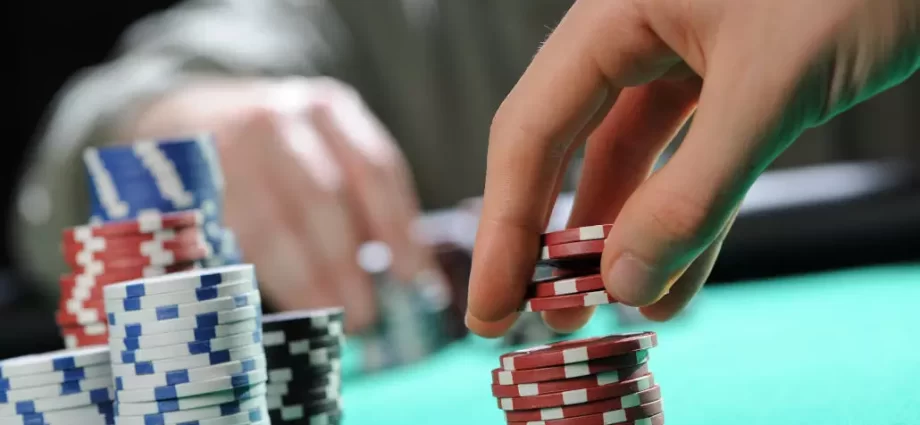Bluffing is an integral component of poker strategy, yet should only be employed sparingly and after carefully considering both its risks and benefits.
Players should pay close attention to the tells of their opponents when selecting an ideal moment to bluff, including body language and betting patterns which often reveal intentions.
Betting intervals
Bluffing is an essential element of playing poker, requiring a delicate balance between psychological finesse and strategic thinking. A successful bluff can shift the momentum of a game by making opponents more wary about their own hand; this often prompts them to fold more often, giving the bluffer control of the action and giving him control of a hand more often than expected. But be wary: Bluffing may backfire on you! To ensure it becomes second nature it’s essential that you know when and how best to utilize bluffing strategies effectively as well as practicing this skill until it becomes second nature!
As part of an effective bluff, it’s crucial that you pay close attention to your opponent’s body language and facial expressions, including eye movements, posture, breathing patterns and how they handle their chips – these subtle clues may help identify tells that indicate whether they’re bluffing or not. Calculating pot odds also plays an important role as it allows you to measure their odds of winning and decide if risking chips is worth your while.
Learning the art of bluffing takes time and practice; with proper strategies and experience it can become an essential element of your game. By studying Pokerology lessons and applying them in practice you’ll master this artful tactic and take your game to new heights!
Limits on bets
Bluffing can be an effective poker strategy, but should only be employed after careful evaluation of risks and rewards. Knowing your opponent and game situation well enough to make informed decisions when to bluff is key; also necessary are hand-reading skills which can be acquired with practice and experience.
When bluffing, timing and size of bet are of utmost importance. Ideally, you should bluff when your opponents are unlikely to fold a strong hand; this increases your odds of success while keeping opponents from learning how to read your betting patterns.
Another essential consideration in poker is identifying the odds of your opponents’ hands. To do this, pot odds (the ratio between bet and pot size) need to be calculated. With this data at hand, you can estimate the probability that an opponent is holding strong cards and determine whether calling or raising is worthwhile.
Noticing tells your opponents may have is also crucial, such as looking out for any signs that they have an excellent hand or are likely bluffing; tight and stiff posture could indicate they possess strong hands while relaxed and moving are indicators they are more likely bluffing; although, this may be hard to spot if your opponents are adept at concealing emotions and betting patterns.
Limits on raises
Bluffing is an integral component of poker strategy, yet must be used carefully and strategically. Bluffing involves deceiving your opponents while remaining calm and not reacting emotionally; quick decision-making and risk taking skills must also be employed if a successful bluff is to take effect and give an edge against your competitors. A successful bluff can alter the course of a hand and give you a substantial edge against them.
Understanding how your opponents perceive you at the table is also key, as your table image plays a major role in whether your bluff succeeds or fails. If your bets are taken as signs of strength and accepted more readily as bluffing opportunities. On the other hand, wild players tend to get their bets called more frequently, decreasing chances of successful bluffs.
Successful bluffing requires reading your opponent’s body language and betting patterns accurately. Pay close attention to their expressions, pauses, nervous movements, or expressions suggesting they have strong hands or may fold shortly – these could all be signals that indicate they might fold soon enough and allow you to adjust betting and bet sizing strategies to optimize profitability of bluffs so as to increase chances of winning the pot while decreasing costly mistakes.
Limits on bluffs
Bluffing is an integral component of poker strategy, yet can be hazardous for beginners. Successful bluffing requires reading opponents quickly, making quick decisions, and managing emotions under pressure in the heat of the moment. Expert bluffers use various tricks and strategies to deceive their opponents into calling with weaker cards – and ultimately increase the chance that their hand will be called by another hand.
When issuing a bluff is best done when your opponent displays signs of weakness such as slow betting. Furthermore, it is key that bet sizes match what would have been bet for value hands in similar situations – this ensures your opponents cannot pick up on any differences between your bluff and value bets.
As with all forms of poker, bluffing should be targeted at suitable targets. For instance, opponents who have just lost a large pot and are stacking their chips may be more interested in protecting their bankroll than making risky calls; these players make ideal candidates for bluffing as they won’t call bets very often, allowing you to convince them that you hold a pair without risk. Unfortunately bluffing alone won’t bring in profits; to make an actual profit from it you need win more bluffs than losses compared to losses in order to see results in the short term – long term it needs more wins than losses in order to turn bluffs into profits than it loses.











